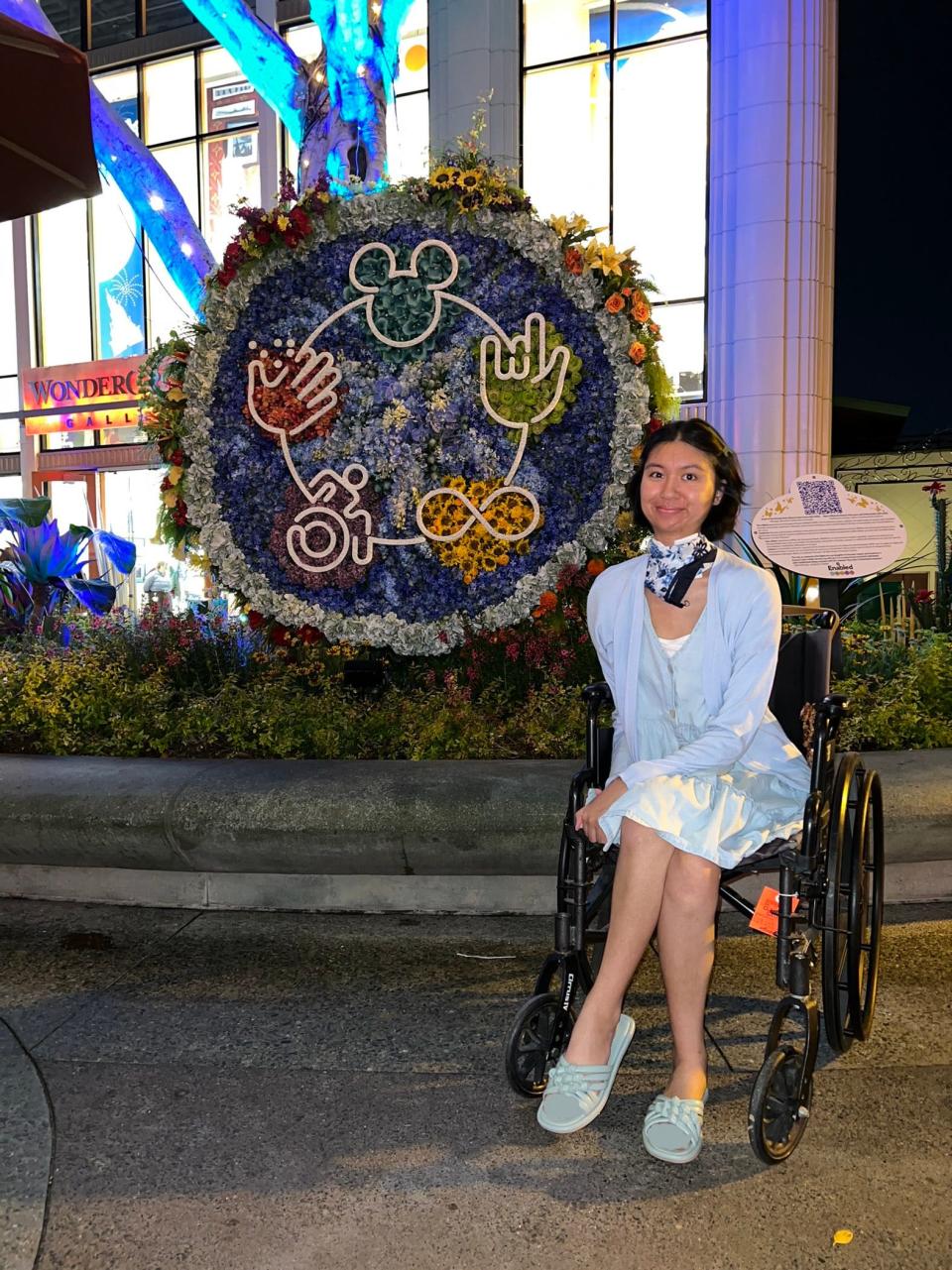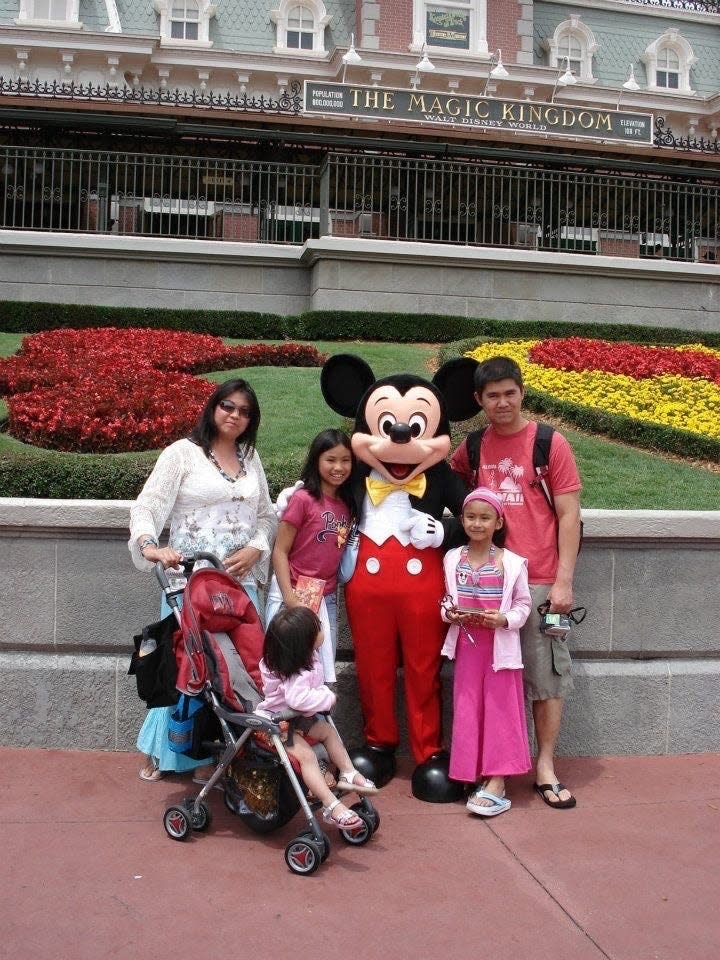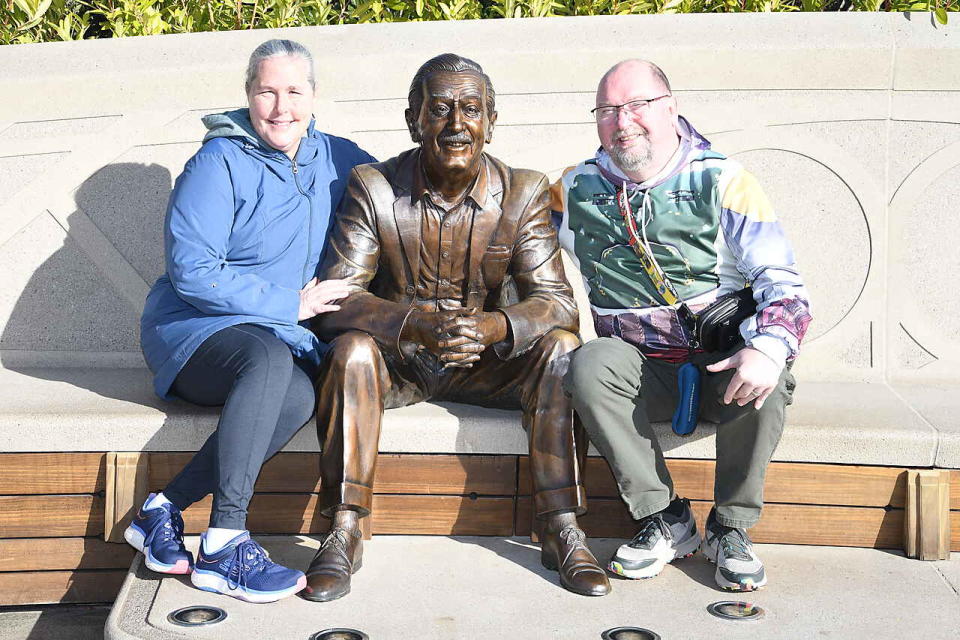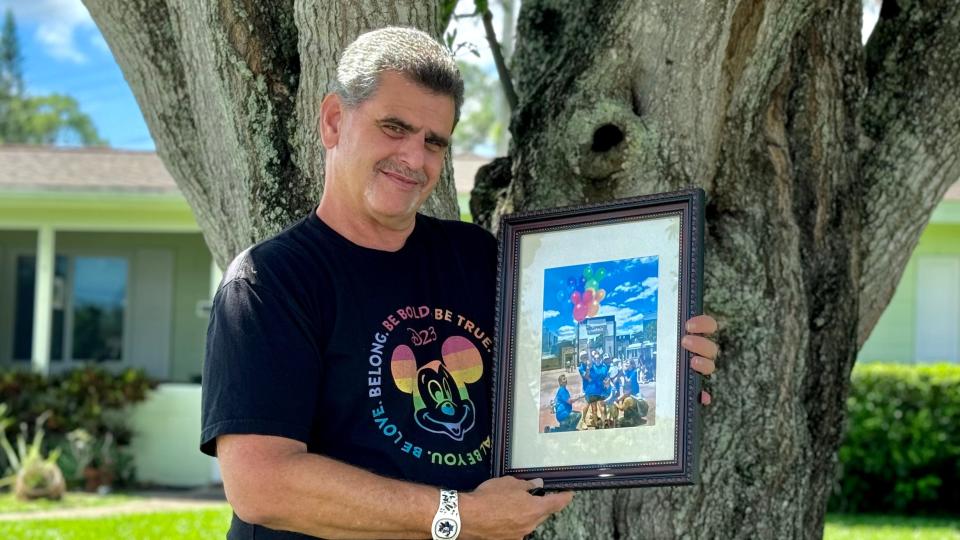'Imagine something': Disabled Disney guests demand action after DAS program changes
Get more news like this delivered to your inbox by signing up for our Travel newsletter here.
Charisma Mangahas has “been a lover of Disney ever since I was a kid.”
Being diagnosed with Guillain-Barré syndrome, a rare nerve-damaging disorder, in 2018 changed the way she experienced the parks. A recent overhaul of Disney’s policies for guests with disabilities is changing it again.
“I was recently denied the Disability Access Services here at Disneyland and Disney California Adventure,” the Magic Key (annual pass) holder said in a video that’s gotten 1.7 million views and been shared across other social media.
She’s not the only one who no longer qualifies for DAS. Now more than 23,000 signees are petitioning for “immediate action.”
What is DAS?

Disney’s Disability Access Service is one of various accommodations available for guests with disabilities at Disneyland and Walt Disney World, which have historically been known for their accessability. DAS doesn’t cut wait times, but it allows guests to wait for rides outside of a traditional line by joining the queue virtually, waiting out the designated time elsewhere in the park, then heading to the attraction during a specified return window for a shorter in-person wait.
In order to qualify, guests must go through an interview before their park visit.
What is eligible for DAS?
Both Disney World and Disneyland’s websites say the service is intended for “guests who, due to a developmental disability such as autism or a similar disorder, are unable to wait in a conventional queue for an extended period of time.”
However, prior to the change – which took effect on May 20 at Disney World and June 18 at Disneyland – the resorts simply said it was intended “to assist guests who have difficulty tolerating extended waits in a conventional queue environment due to a disability.”
Why did Disney change DAS?

DAS had become the most requested service at Disneyland and Disney World in recent years with a user volume eclipsing the program’s intended audience and impacting waits and experiences for guests needing the accommodations.
Neither Disneyland nor Disney World have responded to USA TODAY’s requests for comment on this story, but when changes were announced in early April, Disney said, “Disney is dedicated to providing a great experience for all guests, including those with disabilities, which is why we are so committed to delivering a wide range of innovative support services aimed at helping our guests with disabilities have a wonderful time when visiting our theme parks.”
Disney also increased the number of specially trained cast members to help guests with other access needs find the right accommodations.
What other accommodations are available?
Accommodations include, but are not limited to, American Sign Language interpretation, Disney Handheld Devices that provide captions and visual descriptions for guests with hearing impairment, braille guidebooks and maps, sensory guides for attractions, and at Disneyland, Location Return Times for guests with mobility devices or other physical needs that can’t be accommodated by older, non-wheelchair accessible attraction queues.
Some guests, like Mangahas, are offered return to queue, allowing them to “briefly step out of the standby queue and then rejoin their party” when needed, according to Disneyland’s website. “Every attraction has a defined process to support this option based on a person’s disability while the rest of the party remains in the queue.” Guests are directed to speak to cast members at each attraction to ask for specific details.
No longer qualified

Mangahas said she was shocked to learn she no longer qualified for DAS.
She recalled a cast member telling her, ”You weren't denied the DAS. You were provided other accommodations, and it's up to you to take it … If you like, you can purchase the Genie+.”
One reason she said she can’t wait in long lines is because she has a trach that needs to be suctioned when she gets congested.
“Getting suctioned in a conventional line isn't what I would feel comfortable with. It’s very loud. It's an intrusive process,” she said.
Getting out of line can also be tricky because she uses a wheelchair.
“I don't want to run over people. My wheelchair is kind of bulky. I don't want to hurt anyone, of course. And I don't want to have to go through group after group after group asking them, ‘Excuse me, excuse me, excuse me,'” she added.
Getting dirty looks
Disney World annual passholder Michelle S. knows how that feels after her kids were offered return to queue instead of DAS.
“When my daughters got joined up with the rest of us, they felt bad. ‘People gave us dirty looks, and people were being mean to us, and people said that we were cheating, Mom,’” she recalled them saying. Her last name is being withheld due to safety concerns.
Michelle explained all four of her adoptive children, ranging in age from 11 to 15, have PTSD from circumstances before joining her family. Additionally, she said her 15-year-old has auditory processing disorder, which causes her anxiety and panic attacks, and her 11-year-old has reactive attachment disorder, so she can’t go off on her own if she needs to step away.
“I wish that they could give you like placards, like a little sign you can carry when you're walking past people in line,” Michelle said. She also wished she didn’t have to explain her kids’ needs at every attraction.
“There's more things that they could do to be accommodating,” she added. “If they have imagineers, then imagine something.”
Don't stare, but don't ignore: What travelers with disabilities wish fellow travelers would do instead
‘It’s not safe for me’

“I can enjoy myself in short periods of time with appropriate accommodations,” said fellow Disney World annual passholder and disabled veteran Stacie Hardie. But “when too many people are around me, it sets off the PTSD, which can and has in the past led to severe anxiety attacks, which can and often do lead to a seizure.”
Hardie said she suffered a traumatic brain injury while serving in the Navy and PTSD, then a stroke a few years ago that led to a seizure disorder, and was diagnosed with vascular dementia this spring. She previously qualified for DAS, but after the policy change, was offered return to queue and rider switch.
“Neither one of those options work for me, especially because it's not safe for me to be out there (alone),” she said. She usually goes to the parks with her husband. “What if I have an issue when he's not there?”
Before, they only went to the parks when her symptoms allowed. Now she’s not sure she’ll go back at all, even though part of the reason they moved to Central Florida was to be near Disney. “I don't know if I ultimately will or not, but (I’m) so upset about the whole thing that it's completely soured Disney,” she said.
Setting limits
Disney World annual passholder and Disneyland Magic Key holder Jamie Solomon said the whole new DAS process was incredibly stressful for him.
He said his father had Lewy Body Dementia, but after years of neuropsych tests, doctors still haven’t quite nailed down his own dementia diagnosis. “They told me they can't tell which one it is until I have an autopsy,” he said. One thing he knows is being in crowded lines in enclosed spaces is “unbearable” for him.
He said he was lucky to be approved, but he still has an issue with the new DAS policies only allowing three other guests to share the DAS user’s benefits when visiting the parks together. The only exception is for immediate family.
“I don't have a traditional family,” Solomon said, noting that his parents have passed away and he’s not in touch with his sister. Instead, he has a “family of choice.”
“A family is a family,” he said. “I’d still like to be able to come with my full-sized family.”

Calls for change
A Change.org petition by a group called DAS Defenders is calling on Disney to adjust its policies.
“It is imperative that Disney recognizes the broad-reaching impact of its decisions and takes immediate steps to rectify this injustice,” the petition reads.
Mangahas said she wasn’t aware of the petition when she made her now viral video, but having previously given a TedTalk on adapting, she’s open to compromise.
“If (Disney) cannot commit to a big change, at least we can work together so that more people who were denied DAS, who need the DAS system, can qualify and receive the service,” she said. Until then, “I'm going to make do with what was given.”
This article originally appeared on USA TODAY: Disney's DAS pass changes ignite disabled guests' calls for action

